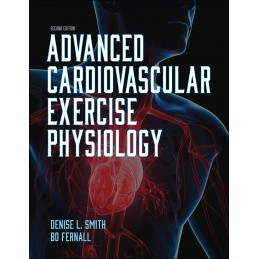Advanced Cardiovascular Exercise Physiology, Second Edition, systematically details the effects of acute and chronic exercise training on each component of the cardiovascular system:: the heart, the vasculature, and the blood (including blood clotting factors). Students and professionals working within exercise science and related health professions will gain a comprehensive understanding of the cardiovascular system and learn how to apply this knowledge to their work.
Advanced Cardiovascular Exercise Physiology, Second Edition, highlights the complex interaction of the components of the cardiovascular system, both at rest and during exercise. Using the latest scientific and medical research, this text presents an engaging discussion of cardiovascular responses and adaptions to both aerobic and resistance exercise training, and it offers readers possible future directions for research. Specific attention is paid to the beneficial effects of exercise and the mechanisms through which regular exercise promotes cardioprotection. The second edition incorporates new topics and expanded information on the following::
- Ventricular hypertrophy
- Central blood pressure and its measurement
- Pathophysiology of arterial stiffness and relevant measurement techniques
- Blood pressure during exercise and its clinical importance
- The effects of prolonged acute exercise on cardiac arterial and hemostatic function
- Endothelial function, including the impact of aging and sex, and potential mechanisms
- An individual’s response and adaptation to both resistance training and aerobic training
The second edition of
Advanced Cardiovascular Exercise Physiology uses a larger format to showcase its richly illustrated contents. Updated figures and graphics visually elucidate physiological mechanisms to depict exercise responses and training adaptations. Each chapter begins with chapter objectives and ends with a summary to help students retain important content. Fifteen case studies are included in the text to showcase the application of chapter material. Key terms are boldfaced throughout the text and are defined at the end of each chapter. In addition, sidebars describe real-world examples and applications.
This text is divided into two sections. The first section offers a concise explanation of the structure and function of each component of the cardiovascular system. In the second section, readers encounter a detailed discussion of the acute and chronic effects of aerobic and resistance exercise on cardiac function, vascular function, and hemostatic variables.
Advanced Cardiovascular Exercise Physiology, Second Edition, provides a framework for understanding how the components of the cardiovascular system cooperate to support exercise and how those components adapt to and benefit from a systematic program of exercise training.




 Delivery policy
Delivery policy
 Security policy
Security policy
 Return policy
Return policy
